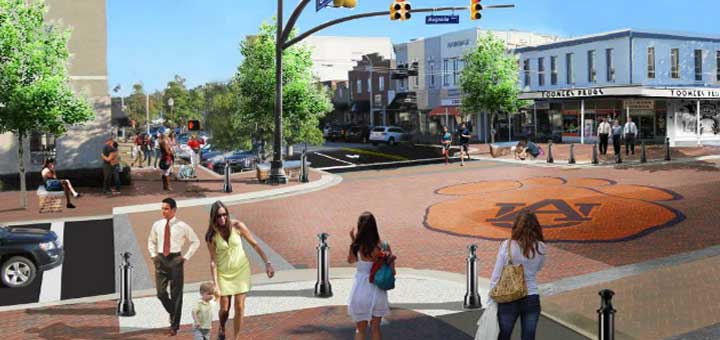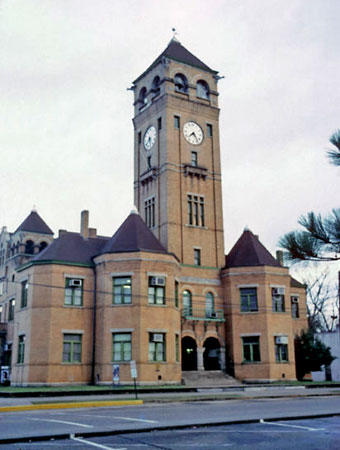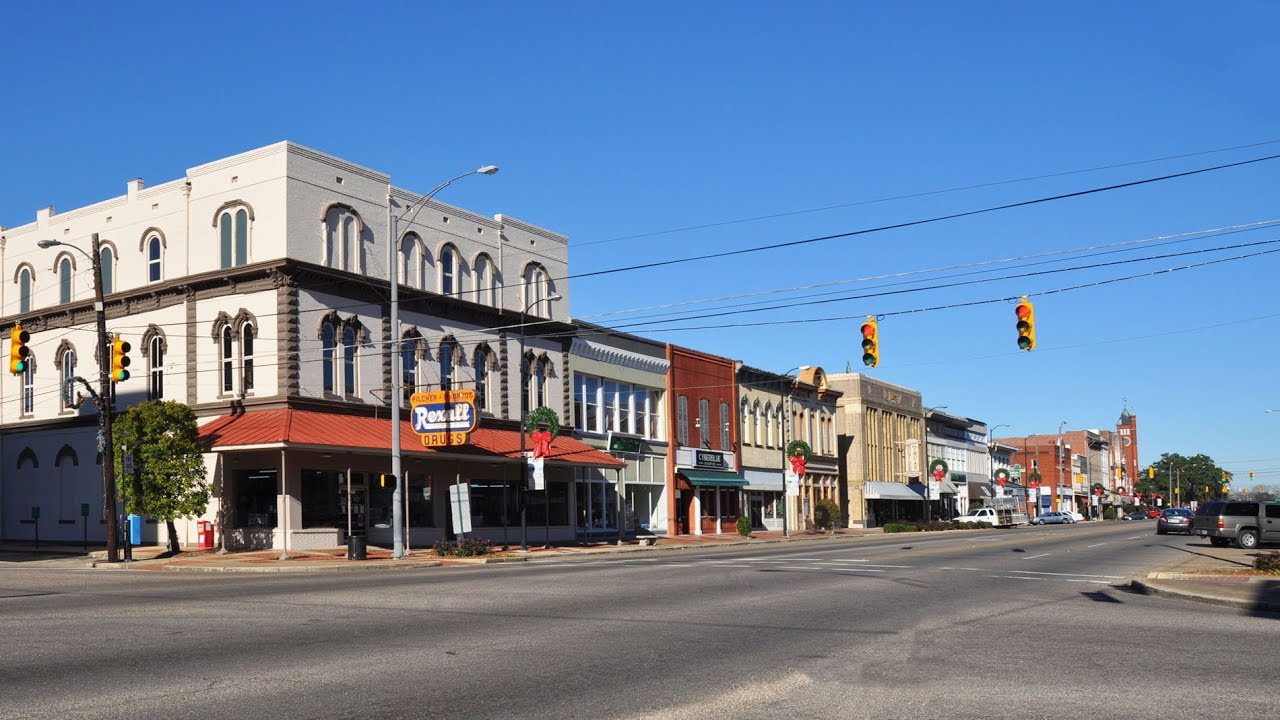The Selma to Montgomery March Is Historic
The Selma to Montgomery March happened for one major reason: the white supremacist trying and succeeding in keeping African Americans from voting.
In fact, until the year 1965 all of the counties in Alabama could use any preventive measure, they desired to prevent African Americans from not only voting but registering to vote.
Only 2% of the African American Population at Most Was Registered to Vote
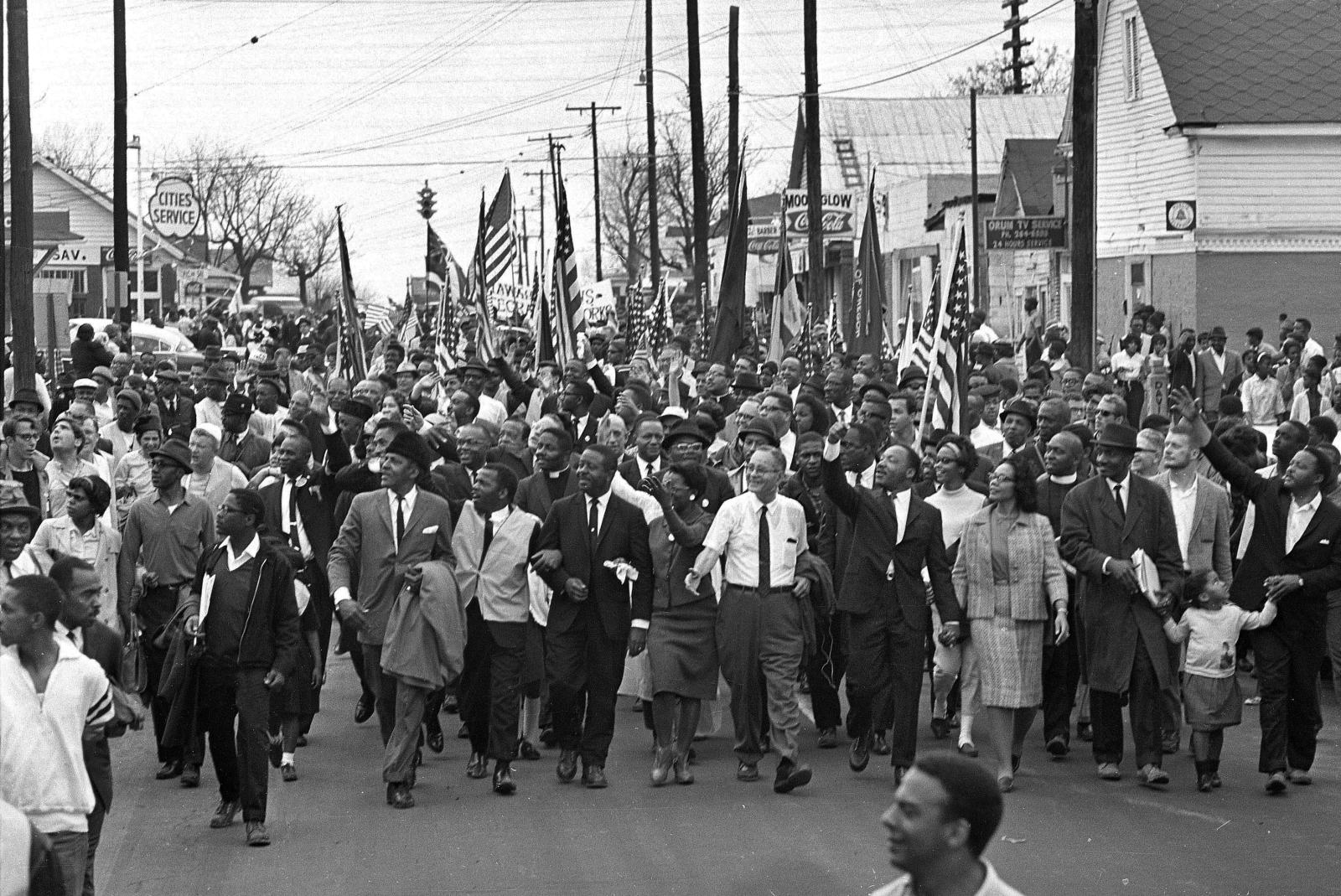 The Selma to Montgomery March Grew From 3.200 to Over 25,000
The Selma to Montgomery March Grew From 3.200 to Over 25,000Because of this, it was estimated that only 2% of the African American population in Dallas County and 0% of Lowndes County were registered to vote.
This did not stop the civil rights activists who begin to protest in Selma to bring attention to the injustices that were occurring.
However, each and every one of these protests was met with some kind of violence from the local sheriff’s department.
Because of this reoccurring violence, it left the African American population to wonder what would be next.
But all of that was about to change. On March 25th, 1965, Martin Luther King led thousands of nonviolent demonstrators to the steps on the state capital in Montgomery.
It was a 5 day 54-mile march where local African Americans, who had been campaigning for voting rights, made the decision to make their voices heard and traveled the Alabama backroads to Montgomery, on old US Highway 80.
They were led by the SNCC, the Student Nonviolent Coordinating Committee, and the SCLC, the Southern Christian Leadership Conference.
During an address at the conclusion of the Selma to Montgomery March, Martin Luther King said the following.
“There was never a moment in American history more honorable and more inspiring than the pilgrimage of clergyman and laymen of every race and faith pouring into Selma to face danger at the side of its embattled Negroes”.
However, the roots for this historic march were laid much earlier.
The Selma to Montgomery March Was Led by Reverend King
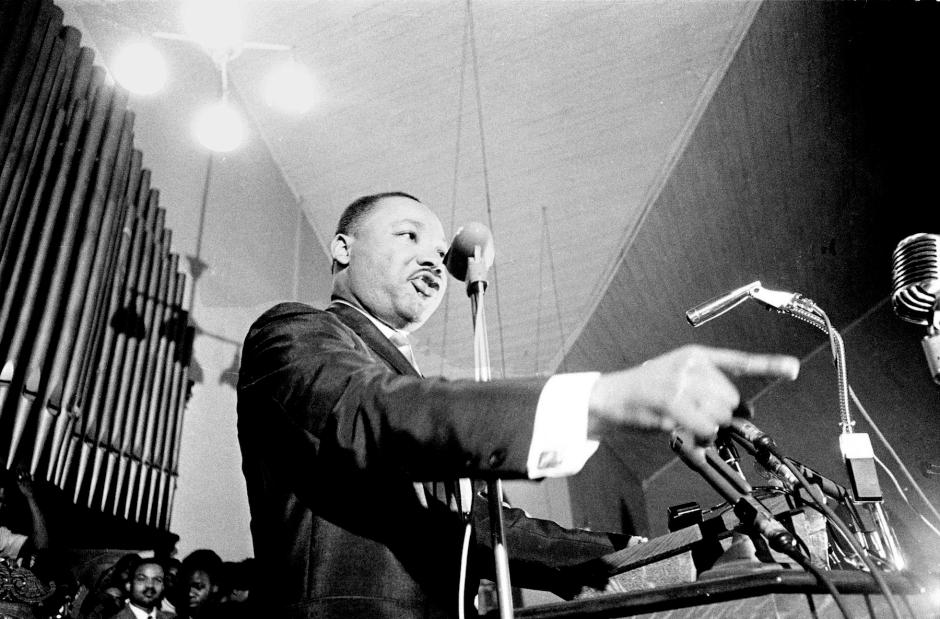 Dr. Martin Luther King Jr.
Dr. Martin Luther King Jr.On January 2nd, 1965, Reverend King and the SCLC joined up with the SNCC, the Dallas County league, as well as other African American activists.
They were joining forces in the first formerly organized attempts to allow African Americans simply the right to register to vote.
Despite several repeated failed attempts, still only approximately 2% of the African American population was actually registered.
They chose Selma for a very specific and chilling reason.
They anticipated that because of the notorious brutality of the local law enforcement and their past history, that they would attract national attention once they were attacked.
They also anticipated that in this process, that the President of the United States, Lyndon B Johnson as well as the congress, would be forced to act.
Thus, the Selma to Montgomery March was born.
During the process, smaller campaigns in both Selma and Marion Alabama were started and experienced mass arrests in the process.
However, there was very little violence—at least not quite yet, as that would come later.
It did and the first major violence occurred on the night of February 18th as Alabama state troopers joined with local police in breaking up a march in Marion.
During the violence, a state trooper shot and killed a 26-year-old male, Jimmy Lee Jackson.
He was attempting to protect his mother from being beaten with nightsticks by the police.
On March 7th, 1965, the famous “Bloody Sunday” event occurred when an estimated 600 civil rights marchers headed east on historic U.S. Route 80 from Selma to the state capital of Montgomery.
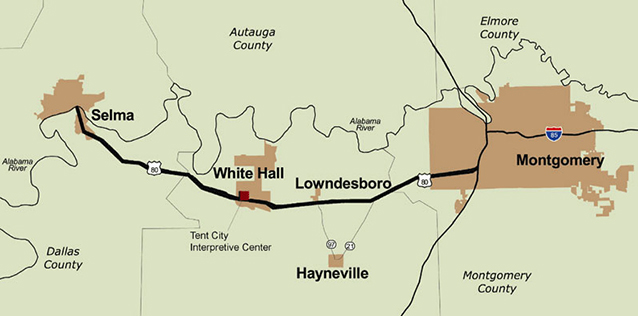 Map of the Selma to Montgomery March
Map of the Selma to Montgomery MarchHowever, these marchers only got as far as the Edmund Pettus Bridge, only six blocks from where they started, when they were basically attacked by both state and local lawmen with Billy clubs and tear gas.
This attacked drove the marchers back into Selma, for another two days. On March 9th, 1965, Martin Luther King led what was referred to as a symbolic march to the same Edmund Pettis Bridge,
However, this time things were different.
The civil right leaders, led by King, sought the protection of the federal court for a third Selma to Montgomery March.
Federal District Court Judge Frank M Johnson Jr. weighed what was referred to as “the right of mobility” against the “right to march” and ruled in favor of the protesters.
Finally, on Sunday March 21st, 1965, an estimated 3200 marchers started their journey from Selma to Montgomery March again on historic U.S. Highway 80.
They walked an estimated 12 miles a day and slept in local fields at nights.
However, during this journey that lasted until Thursday March 25th when they reached the capital of Montgomery, something miraculous occurred.
Their numbers rose from 3.200 to an estimated 25,000 that included both African Americans as well as Whites.
Less than 5 months later, the President of the United States Lyndon Johnson signed the Voting Rights Act of 1965.
This reversed all of Alabama’s restrictive voter rights, finally enabling African Americans the right to vote.
References:
https://www.history.com/topics/black-history/selma-montgomery-march

Alabama Gift Store
Numerous Items for You and Your Family to Enjoy
See it here at the Gift Store
Copyright 2019-2023 Alabamabackroads.com
All Rights Reserved
